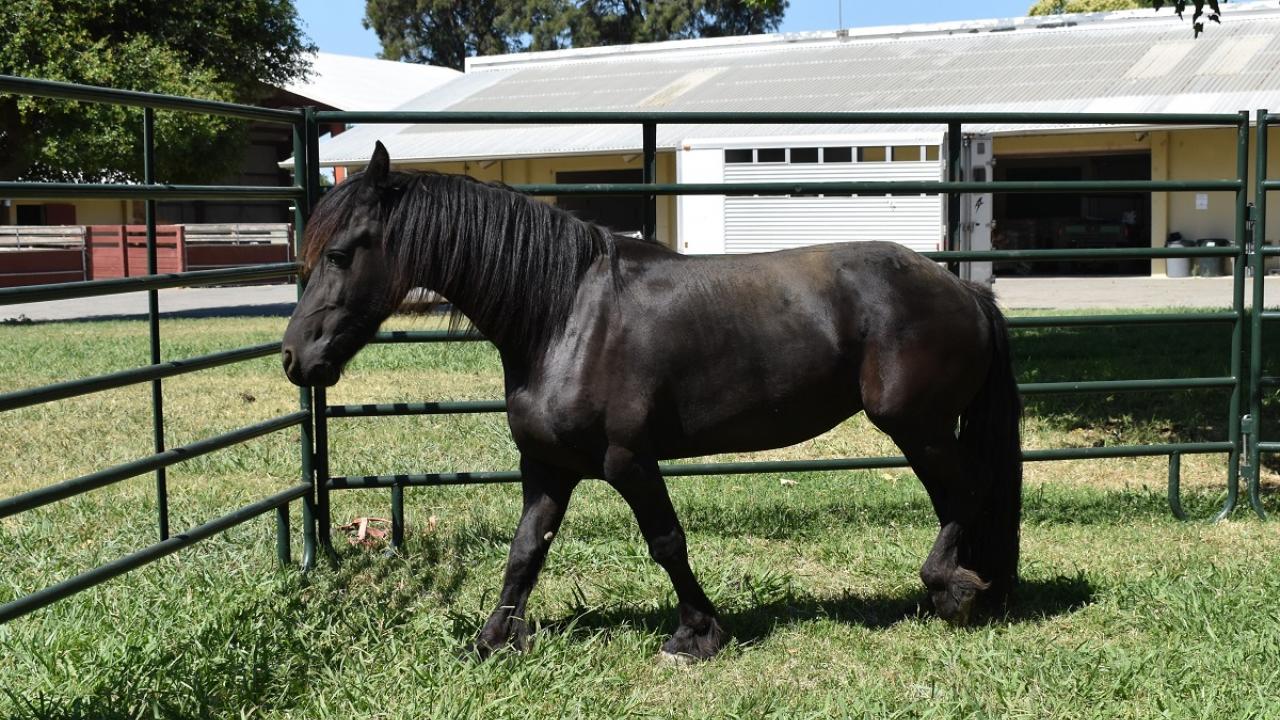
Friesian Dwarfism
Takeaways
- Friesian dwarfism is an inherited disproportionate dwarfism seen in the Friesian breed.
- Affected horses exhibit shortened stature, shortened limbs, and a broad chest.
- There is no treatment for Friesian dwarfism, but affected horses can have a good quality of life.
- A causative mutation has been identified and a genetic test is available.
What is Friesian dwarfism?
Friesian dwarfism is an inherited disproportionate dwarfism seen in the Friesian breed. It results in disproportionate growth with reduced bone length of limbs and ribs. This form of dwarfism has an autosomal recessive mode of inheritance. A causative genetic mutation has been identified and a genetic test is available.
What are the clinical signs of Friesian dwarfism?
Clinical signs of Friesian dwarfism include severely shortened stature, shortened limbs relative to body size, bowed forelegs, a shortened neck, broad chest, and reduced bodyweight. The flexor tendons often exhibit laxity, which leads to hyperextension of the fetlocks and can result in an abnormal gait as the horse ages.
How is Friesian dwarfism diagnosed?
Diagnosis of Friesian dwarfism can be made based on the characteristic appearance and breed predisposition. Radiographs (x-rays) can provide further evidence. Microscopic analysis of growth plates in affected animals shows irregular transition from cartilage to bone and abnormal arrangements of chondrocytes (cartilage cells). The genetic test can be utilized for a definitive diagnosis.
How is Friesian dwarfism treated?
There is no treatment for Friesian dwarfism.
What is the prognosis for Friesian dwarfism?
The prognosis for Friesian dwarfism is good. Affected foals do grow, but at a slower rate than their unaffected counterparts. Most are able to walk, trot, canter, and gallop, and some are even ridden.
How can Friesian dwarfism be prevented?
The available genetic test for Friesian dwarfism can be used to inform mating decisions and avoid producing affected foals. Since the disorder is inherited in an autosomal recessive manner, an affected foal has to inherit one copy of the causative mutation from each of its parents. Carrier by carrier matings should be avoided as they will result in an affected foal 25% of the time. This test is recommended for Friesians and Friesian crosses.
For more information:
UC Davis Veterinary Genetics Laboratory - Friesian Horse Dwarfism genetic test
*This article may not be reproduced without the written consent of the UC Davis Center for Equine Health. Please email requests to cehadmin@ucdavis.edu.
